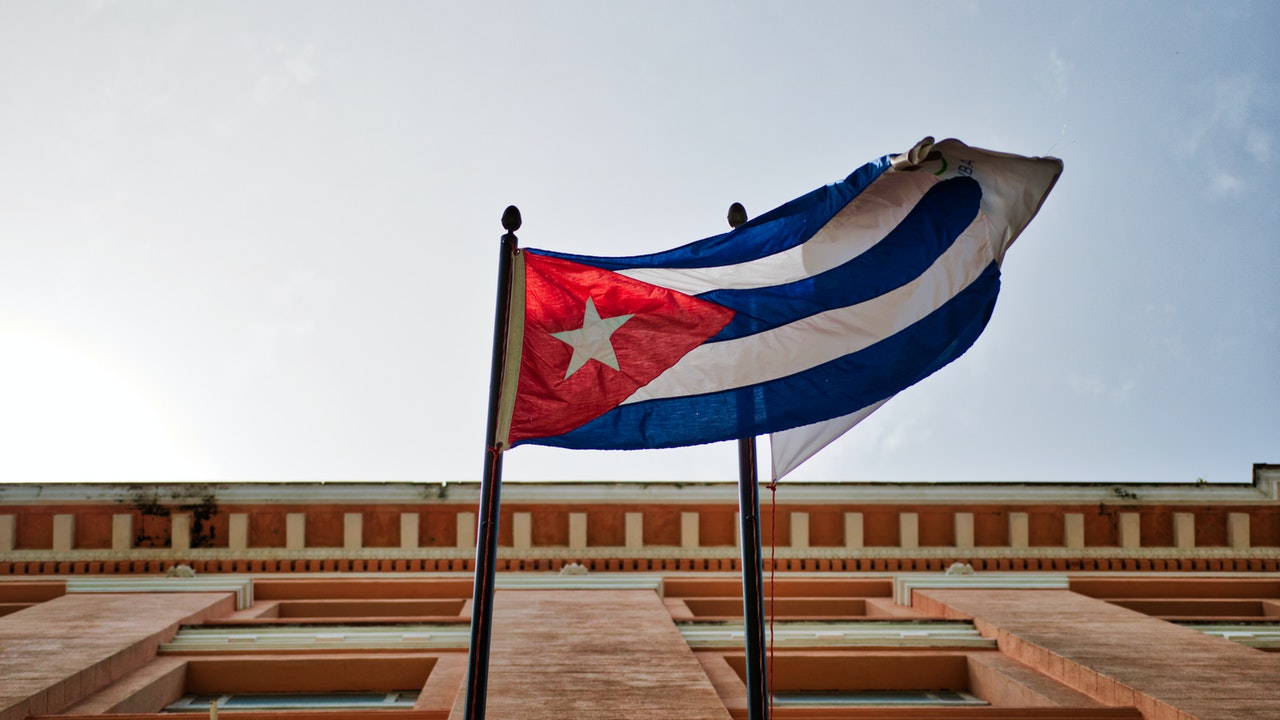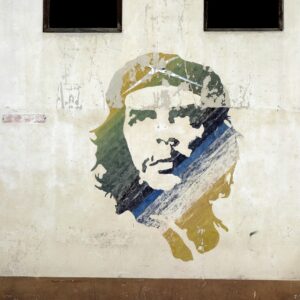“Emphasis on public participation by Cubans is focused not only on periodic voting but also on continuous participation in governing.” MarkH. Kruger (2007) Community Based Crime Control in Cuba
Countries like the US and UK treat crime as if it’s an individual responsibility: the result of bad people doing bad things. This framing leaves little scope or responsibility on society for preventing crime, and instead puts the focus on fighting crime through tough law enforcement.
If some people are just bad, they need good people to forcibly keep them in line.
Cuba takes a different view of crime, seeing it as often stemming from social and economic conditions. Under this view, you can alter the conditions in order to prevent and reduce crime.
Early after theRevolution, the Cuban government sought to reshape Cuban culture away from individualism and towards community mindedness.
“Prior to the Cuban Revolution of 1959 there was a lack of community identification and empowerment in Cuba. The country’s Batista-run government was a dictatorship supportive of America’s off-shore business interests, and Cubans were not able to participate actively in decision-making in areas that most affected their community organizations and workplaces. An attempt to change people’s perspectives from the individual to the collective was led by Cuban revolutionary Che Guevara, who believed that living under a capitalist economic system caused people to adopt traits characterized by individual greed, profit, and selfishness. His aim was to instill in the Cuban people new values that emphasized moral convictions of social justice and a collective rather than an individualist approach to life. According to Juan Antonio Blanco, Director of the Felix Varela Center, a Cuban non-governmental organization studying ethics and politics, one of the goals of the Cuban Revolution was to create those new perspectives and values in Cuban citizens. It sought to create Guevara’s vision of el hombre nuevo, the new man. The Cuban Revolution thus sought to be not only a vehicle for redistributing wealth in Cuba but also to release the Cuban people’s creativity and participation in society.”
To do this they set up community organisations all over the island. These Committees for the Defence of the Revolution (CDRs) have since become the main vehicle through which community life is organised.
“Members of CDRs organize neighborhood meetings; they set up the lights, tables, chairs, and microphones and mobilize citizens to attend. CDR meetings are frequent, and although attendance is voluntary, most residents of a block attend the meetings whetheror not they are members of the organization.” Ibid
Today there are over 133,000 CDR units throughout Cuba, with more than 8.3 million members, out of a population of 11.4 million. Every person 14 or older is eligible to join their local CDR and practically the whole adult population is a member.
Each Committee appoints officers who are responsible for seven different areas of public life: vigilance, ideology, public health, youth, finances, recycling, and voluntary work.
The committees work with the community to resolve problems as they arise. For instance, if a school or resident reports a problem with a student being truant, members of the CDR will investigate the problem and try to solve it with the student and their family.
“University of Havana Professor Miriam Verdes Suarez, who has been the President of her local CDR unit for eight years, described a problem faced by her organization when a 12-year-old boy was not attending school. CDR members determined who was the best person to approach the mother, discussed the problem with her, and learned that the father had a drinking problem and failed to buy the boy decent shoes. The truancy was due to the boy’s shame at going to school with inappropriate shoes. The CDR obtained new shoes for the boy and referred the father to a local social worker who would be able to help him with his problem.
“Professor Verdes also described the problem of a child who did not want to go to school. The mother sought the help of the local CDR which, together with local social workers, determined that the child was a slow learner. It obtained a salary for the mother, so that she did not have to work outside the home and was thereby able to work with her son on academic matters.” Ibid
Focusing on raising the country’s youth properly is one of the main ways that Cuba’s community organizations try to prevent crime, as they believe that shaping young people into moral and responsible citizens will prevent problems down the line.
“According to Jose Manuel Garcia Torres, National Director of the Department of International Relations of the Committees for the Defense of the Revolution, prevention is the primary focus of the CDR attempt to control crime. Education and the family are fundamental to crime control. Glenda Azoy, the principal of a training school for CDR leaders, suggested: ‘It is easier to educate than to reeducate’.
“Attention is paid to whether children obtain favorable results in school, whether their grades are satisfactory, and whether they are socially integrated. Emphasis on drug prevention begins early, and children are taught the dangers of drug use from an early age. CDR organizations publish cartoons and use the media to warn of the dangers of drug use. When CDR members identify a group of young people using drugs, they attempt to work with each individual, helping them to continue in school, obtain work, and get medical treatment.” Ibid
Having tightly integrated communities allows Cubans to look out for vulnerable people of all ages and solve community problems as they come up.
“Because they meet frequently and work on public projects together, CDR members know each other and thus are familiar with most residents of their blocks. They are aware of which block members are old and need checking on, which residents work during the day and are not at home, and which block residents have problems in their households that may need social support.
“They organize vaccination drives for children on the local level, help to resolve problems informally between neighbors, aid in the census, and organize special activities for the block.
“CDR members frequently clean up common areas, fix up parks, and generally keep their blocks in good condition. Approximately once a month members voluntarily clean the streets of their blocks or neighborhoods and cut the grass in common areas. They also participate in the discussion of political issues affecting the community.” Ibid
When the neighborhood needs maintenance, CDR committee officers gather teams of volunteers to carry it out. Aside from keeping the place safe and pleasant looking, working for the community and seeing others do so helps to keep residents emotionally invested in each other’s well being.
“…local activity has a direct effect on neighborhood crime control. The ‘broken windows’ syndrome is often dealt with by mobilizing retired persons to perform minor neighborhood repair and clean up…
“At another meeting volunteers were sought for the mobilization of two brigades to make house repairs. Aside from the repairs themselves, such labor had the additional socially beneficial effect of providing work for the unemployed and employment training for young people. Such efforts also reduced the number of unemployed youth who were not attending school.” Ibid
The fact that ties between members of the community are strong means that a neighborhood’s retired people can act as the community’s eyes and ears, and, along with other residents, are able to bring up any problems of crime, suspicious, or anti-social behaviour, and report them to their CDR. This allows communities to deal with problems before they escalate. The community in Cuba acts like a cohesive group, not merely a collection of atomized neighbours.
Through all these methods of community building and collective care of individuals, Cuba has achieved impressive results, including the lowest rates in the Caribbean of crimes against women, such domestic abuse and rape.
It seems clear that Cuba has both defended its Revolution and kept crime low, by actively building a strong collective life within its neighborhoods. Future socialist projects can look to this as a positive example of shaping the superstructure to reinforce Socialism and protect communities.
References:
Mark H. Kruger (2007) Community‐Based Crime Control in Cuba, Contemporary JusticeReview: Issues in Criminal, Social, and Restorative Justice, 10:1, 101-114, DOI: 10.1080/10282580601157919





